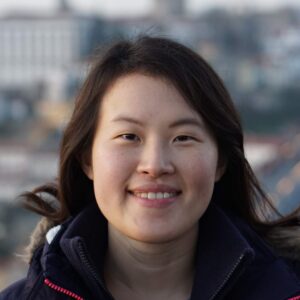
PhD student researcher, electrical engineering and bioinformatics
Project:
A microelectronics-based in-vitro platform for testing major arrhythmic events in the rare cardiac disease ARVC/D (Interdisciplinary Doctoral Project, 2018)
Jihyun: In collaboration with the University Heart Center of Zurich we are studying rare hereditary cardiac diseases, which cause sudden cardiac death. Due to their low prevalence in the public, there is only little literature in both clinical and fundamental research in comparison to other diseases. To overcome the limited access to patients and heart-tissue samples, we use induced pluripotent stem cells (iPSCs), which are derived from patients and, therefore, retain the patient’s genetic signature. We then differentiate the iPSCs into cardiomyocytes, which serve as a surrogate of the patient’s heart, to study the pathogenesis and drug efficacy specifically for each patient and disease. We use high-density microelectrode arrays (HD-MEAs), extensive signal processing, and machine learning to measure and analyze the electrophysiological data of patient-specific iPSC-derived cardiomyocytes.
Jihyun: The biggest challenge for us is how to translate the findings of our research, which is conducted in vitro, to clinical settings. We first characterize electrophysiological phenotypes of the disease-model cells with our HD-MEAs and then compare them with clinical data, such as ECG recordings of the patient, to evaluate if the in vitro phenotypes show some agreement with clinical data. Then, we move on to drug-efficacy testing, using only antiarrhythmic agents, which are administered in the clinic, so that compounds, which are found to be effective in vitro, can be tested with patients.
Jihyun: Often, rare diseases have low priority in research, although many patients and families are suffering. I am very proud to be working on rare cardiac diseases, which have not attracted enough attention from the public and foundations. Owing to the support of PHRT, we are able to collaborate with cardiologists and contribute to advancing the knowledge in the field and, in the end, hopefully to saving lives of patients, who are at risk of sudden cardiac death.
Jihyun: While working on interdisciplinary projects, we face a lot of issues and challenges that go sometimes beyond our expertise and resources. Networks within the ETH Domain are very well-established and interdisciplinary, and I can easily reach out to laboratories that have relevant experience and equipment for help and collaboration.
Jihyun: I hope to contribute to expanding the knowledge about rare diseases of both, the research community and the general public. By raising awareness and expanding the knowledge, clinicians and patients will be able to better deal with such disease cases and, hopefully, prevent fatalities. In addition, early diagnosis and detection of arrhythmic events are pivotal for treating the disease. I hope that my research, which includes HD-MEAs, signal processing, and machine learning techniques, can be transferred to mobile devices, such as smart phones and smart watches, to detect arrhythmic events as early as possible.